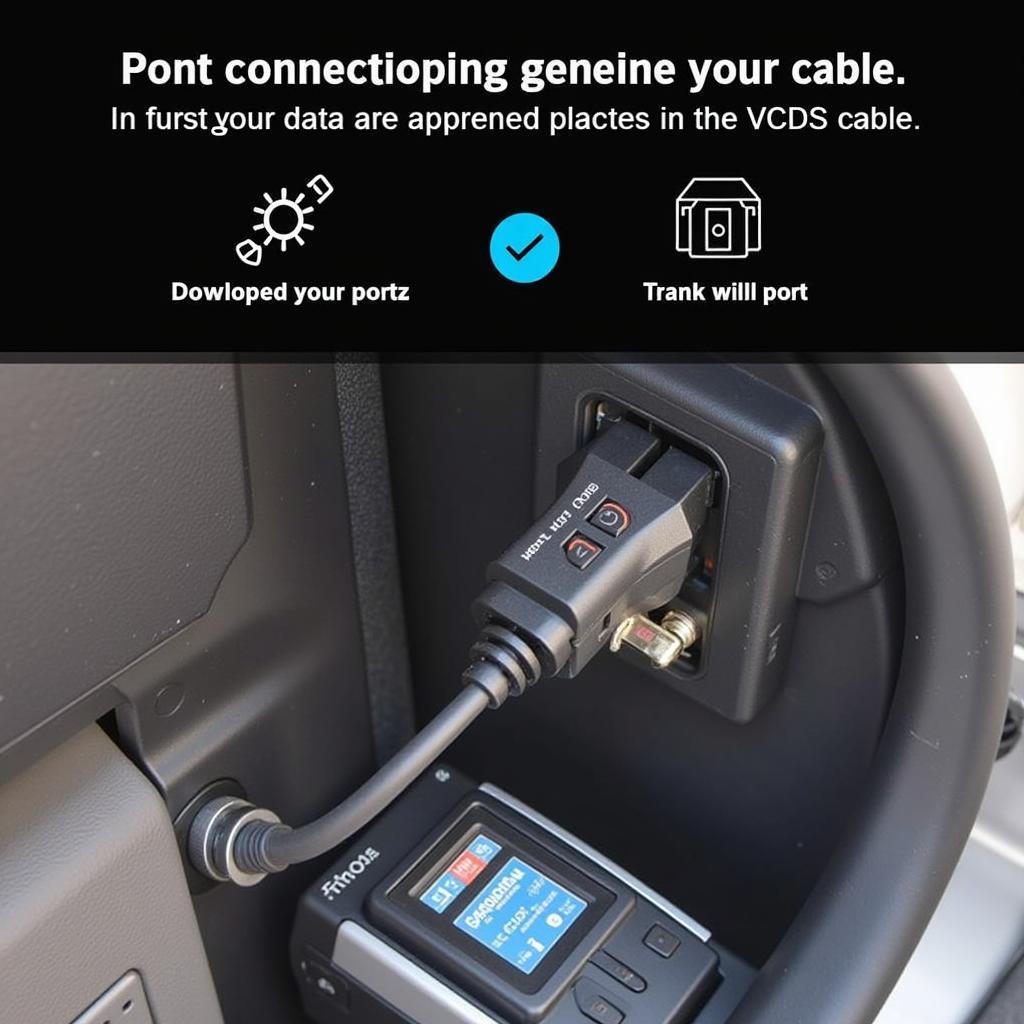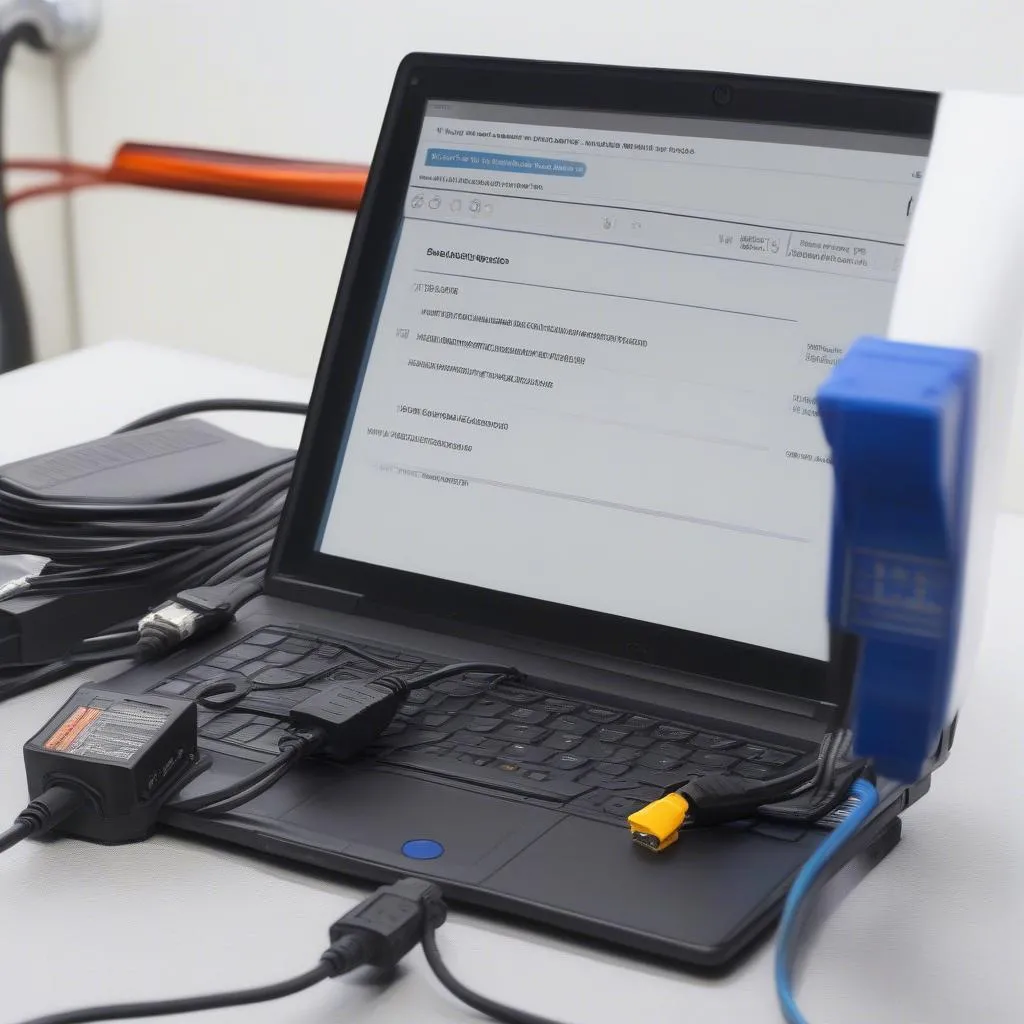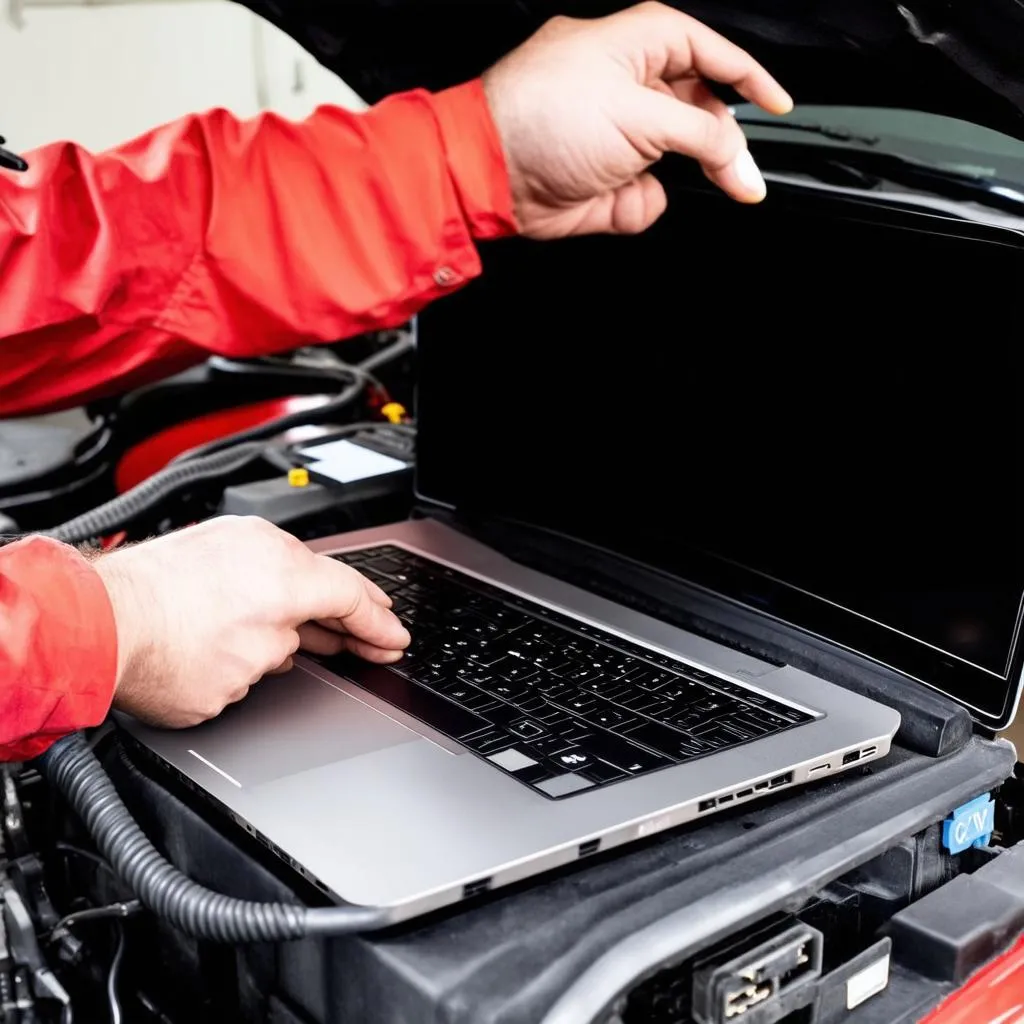VCDS resetting of all adaptation values is a powerful procedure that can resolve various vehicle issues. This guide delves into the intricacies of this process, offering insights for car owners, repair shop owners, and technicians alike.
Understanding the importance of adaptation values is crucial. These values, stored in your car’s control modules, allow the vehicle to adjust to wear and tear, optimizing performance over time. However, corrupted or incorrect adaptations can lead to drivability problems. Resetting these values can often rectify these issues, essentially giving your car a fresh start. This procedure is commonly performed using VCDS, a powerful diagnostic tool for Volkswagen, Audi, Seat, and Skoda vehicles.
What Does VCDS Resetting of All Adaptation Values Entail?
VCDS resetting involves accessing specific control modules through the software and selecting the option to reset adaptation channels. This process returns the adaptation values to their default settings. This can be beneficial for issues related to throttle response, transmission shifting, and various other systems. However, it’s important to note that resetting all adaptation values isn’t always a guaranteed fix. It’s essential to diagnose the problem accurately before resorting to this procedure. Similar to vag kkl 409.1 vcds, understanding the tool’s capabilities and limitations is essential.
When Should You Consider VCDS Resetting of All Adaptation Values?
Several scenarios warrant considering a VCDS reset. Rough idling, erratic shifting, poor fuel economy, and unresponsive throttle are common indicators. However, before proceeding with a full reset, it’s always recommended to try resetting specific adaptation channels related to the observed symptoms. For example, if you’re experiencing issues with your automatic transmission, try resetting the transmission adaptation values first before performing a global reset. This targeted approach can often resolve the problem without affecting other systems.
How to Perform VCDS Resetting of All Adaptation Values Safely?
Performing a VCDS reset safely requires a few key steps. First, ensure you have a genuine VCDS cable and the latest version of the software. Next, connect the cable to your vehicle’s OBD-II port and launch the VCDS software. Select the appropriate control module and navigate to the adaptation channels. Finally, select the option to reset all adaptation values and confirm the action. Remember to consult the VCDS documentation or seek professional guidance if you’re unsure about any step. This is analogous to vcds service interval change, where precision and understanding are vital.
What are the Potential Risks of VCDS Resetting?
While VCDS resetting can be highly effective, it’s crucial to be aware of potential risks. Incorrectly resetting certain adaptation values can lead to unintended consequences, potentially affecting the vehicle’s performance. In some cases, a full reset might require subsequent recalibration or coding procedures. For instance, resetting steering angle sensors might necessitate a steering angle sensor calibration afterwards. This is why a thorough understanding of the system and its dependencies is vital. As with vcds adaptation codes, a comprehensive understanding is key to avoiding potential issues.
Is VCDS Resetting a Permanent Solution?
VCDS resetting isn’t always a permanent fix. While it can often resolve issues caused by corrupted adaptations, underlying mechanical or electrical problems might still persist. It’s essential to address the root cause of the problem to achieve a lasting solution. Think of it as rebooting your computer; it can fix temporary glitches but won’t resolve hardware issues.
“VCDS resetting is a powerful tool, but it’s not a magic wand,” says John Miller, a seasoned automotive diagnostician. “It’s crucial to understand the underlying cause of the problem before attempting a reset.”
 Car OBD Port VCDS Connection
Car OBD Port VCDS Connection
Common Scenarios for VCDS Resetting
VCDS resetting can address various scenarios, such as erratic idle, transmission shifting problems, throttle response issues, and even some electrical glitches. For example, resetting the throttle body adaptation can often resolve rough idling problems. Similarly, resetting the transmission adaptation can improve shifting smoothness. Understanding vcds audi a4 b8 specific adaptations can be invaluable.
“I’ve seen numerous cases where a simple adaptation reset has solved persistent drivability issues,” adds Maria Sanchez, an experienced automotive technician. “It’s often the first step I take when troubleshooting complex problems.”
In conclusion, VCDS resetting of all adaptation values can be a valuable tool for resolving various vehicle issues. However, it’s essential to approach this procedure with caution and a thorough understanding of its potential implications. Accurate diagnosis and careful execution are key to achieving positive results and avoiding potential risks. If you’re unsure about performing this procedure yourself, it’s always best to consult a qualified technician. This is particularly crucial when dealing with complex systems like the Diesel Particulate Filter, as highlighted in the article on vcds dpf reset.
FAQ
- What is VCDS?
VCDS is a diagnostic software for VAG vehicles. - What are adaptation values?
Adaptation values allow the car to adjust to wear and tear. - When should I reset adaptations?
When experiencing drivability issues, after repairs, or after component replacements. - Is it safe to reset all adaptations?
It’s generally safe, but it’s best to consult a professional if unsure. - Is VCDS resetting a permanent fix?
No, it’s not always a permanent fix. Underlying issues may need to be addressed. - What are the risks of resetting adaptations?
Incorrect resets can lead to unintended consequences. - Where can I get help with VCDS?
Contact a qualified technician or consult online forums and resources.
Need assistance? Contact us via Whatsapp: +1 (641) 206-8880, Email: CARDIAGTECH[email protected] or visit us at 276 Reock St, City of Orange, NJ 07050, United States. Our customer support team is available 24/7.


